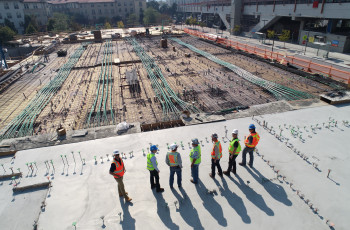Looking to take your DIY projects to the next level? Look no further than modern angle grinders. These versatile tools have come a long way with their advanced features, making them a must-have for any handyman or DIY enthusiast. From adjustable speed settings to enhanced safety features, modern angle grinders will revolutionize the way you tackle your projects. In this article, we will explore the advanced features of these power tools and how they can enhance your DIY experience. Get ready to unleash your creativity and achieve professional results with the latest advancements in angle grinders.
Variable Speed Control
Benefits of Variable Speed Control
Angle grinders are versatile power tools that can be used for various applications including cutting, grinding, polishing, and sanding. One key feature that sets modern angle grinders apart is variable speed control. This feature allows you to adjust the RPM (revolutions per minute) of the grinding wheel or disc according to your specific task and material.
The benefits of variable speed control in angle grinders are numerous. Firstly, it allows for greater precision and control. Different materials require different speeds for optimal performance and safety. With variable speed control, you can easily choose the appropriate speed to achieve the desired results. This is particularly important when working with delicate materials or when you need to make precise cuts or grinds.
Secondly, variable speed control helps to prevent overheating and damage to both the grinder and the material being worked on. When you operate the grinder at a speed that is too high for the material, it can cause excessive friction and heat, leading to burn marks or even melting in some cases. By adjusting the speed to match the material, you can avoid such issues and ensure a smooth and clean cut or grind.
Furthermore, variable speed control allows for increased versatility and adaptability. Whether you’re working on metal, wood, or concrete, you can fine-tune the speed to best suit the material’s characteristics. This flexibility makes angle grinders with variable speed control suitable for a wide range of applications, from heavy-duty industrial tasks to delicate artistic projects.
Applications of Variable Speed Control in Angle Grinders
The applications of variable speed control in angle grinders are extensive. One common use is in metalworking, where different metals require different speeds to achieve optimal results. For example, when grinding stainless steel, a lower speed is often recommended to prevent overheating and discoloration. On the other hand, when working with aluminum, a higher speed may be necessary to achieve a smooth finish.
In woodworking, variable speed control allows for precise shaping and sanding. By adjusting the speed to match the hardness and grain of the wood, you can avoid splintering or damaging the surface. It also enables you to switch between different attachments such as sanding discs or wire brushes, each requiring a specific speed for effective operation.
In the construction industry, variable speed control is particularly useful when working with concrete. Different stages of the concrete finishing process, such as grinding or polishing, require different speeds to achieve the desired level of smoothness and shine. By adjusting the speed accordingly, you can achieve professional-grade results without compromising the integrity of the concrete.
Overall, the variable speed control feature in modern angle grinders expands their capabilities and makes them more user-friendly. Whether you’re a professional tradesperson or a DIY enthusiast, this feature allows you to achieve optimal results across a wide range of materials and applications.
Electronic Kickback Protection
How Electronic Kickback Protection Works
Kickback is a common hazard associated with power tools, including angle grinders. It occurs when the rotating wheel or disc suddenly jams or stops, causing the grinder to jerk violently in the opposite direction. This unexpected movement can lead to loss of control and serious injuries to the operator.
In order to prevent kickback incidents, modern angle grinders are equipped with electronic kickback protection systems. These systems work by detecting sudden changes in rotational speed, which can indicate a possible kickback situation. When such changes are detected, the electronic control circuitry rapidly decelerates the motor and brings the grinding wheel or disc to a stop, preventing or minimizing the occurrence of kickback.
The electronic kickback protection systems use sensors to monitor the rotational speed of the grinder’s motor. These sensors can detect even the slightest changes in speed within milliseconds. When a rapid decrease in speed is detected, the system immediately activates, engaging the brake mechanism and stopping the wheel or disc.
Advantages of Electronic Kickback Protection
One of the key advantages of electronic kickback protection is increased safety for the operator. By quickly stopping the rotating wheel or disc, it significantly reduces the risk of kickback-related accidents. This is especially important for inexperienced users who may not be familiar with the potential dangers of angle grinders.
Electronic kickback protection also helps to prevent damage to the grinder itself. Abrupt stops caused by kickback can place a significant amount of stress on the motor and other internal components, potentially leading to mechanical failures. By promptly stopping the rotation, the protection system reduces the risk of damage and extends the lifespan of the grinder.
Furthermore, electronic kickback protection allows for smoother and uninterrupted operation. When a kickback event occurs, it can disrupt the user’s workflow and result in an uneven finish or an incomplete cut or grind. The ability to mitigate kickback incidents ensures a more efficient and consistent performance, saving time and effort in the process.
While electronic kickback protection greatly enhances safety, it is important to remember that it does not eliminate the need for proper training and safe operating practices. Operators should still follow all recommended safety guidelines, including wearing protective gear and maintaining a firm grip on the grinder at all times. The electronic kickback protection feature should be seen as an additional layer of safety, offering peace of mind and added protection in the event of a kickback situation.
Anti-vibration Technology
Reducing Operator Fatigue with Anti-vibration Technology
Angle grinders are powerful tools that generate significant vibration during operation. Prolonged exposure to these vibrations can lead to operator fatigue, discomfort, and even long-term health issues such as hand-arm vibration syndrome (HAVS). To address this concern, modern angle grinders are equipped with anti-vibration technology.
Anti-vibration technology in angle grinders works by dampening and absorbing vibrations before they reach the operator’s hands. This is achieved through the use of specialized materials, such as rubber or composite compounds, which are incorporated into key components of the grinder, including the handle and grip. These materials act as shock absorbers, effectively reducing the transmission of vibrations to the operator.
By reducing the level of vibrations, anti-vibration technology helps to minimize operator fatigue and discomfort. When using a grinder without this feature for an extended period of time, the constant vibrations can cause muscle strain and numbness in the hands and arms. This can greatly impact the operator’s ability to work efficiently and safely.
In addition to reducing operator fatigue, anti-vibration technology also contributes to better tool control and accuracy. When vibrations are minimized, operators have a steadier grip and can maintain better control over the grinder. This is particularly important when performing tasks that require precision and attention to detail, such as cutting or grinding intricate patterns or shapes.
Implementing Anti-vibration Technology in Angle Grinders
The implementation of anti-vibration technology in angle grinders involves careful design and engineering considerations. Manufacturers employ various techniques to achieve optimal vibration dampening and absorption.
One common approach is the use of vibration-reducing handle designs. These handles are specially contoured and fitted with vibration-absorbing materials to minimize the transmission of vibrations to the operator’s hands. Some handles may also feature ergonomic features, such as adjustable grips or finger grooves, to further enhance comfort and control.
Another method is the incorporation of vibration-reducing mechanisms within the grinder’s internal components. This may involve the use of specialized shock-absorbing bushings or rubber mounts to isolate the motor and other vibrating parts from the main body of the grinder. By separating these components, vibrations are effectively absorbed and prevented from being transmitted to the operator.
Furthermore, advancements in materials science have led to the development of vibration-dampening coatings and inserts. These coatings or inserts can be applied to various surfaces of the grinder, including the body, handle, and even the grinding wheel or disc. They help to attenuate vibrations at their source, resulting in a quieter and more comfortable operation.
Overall, the implementation of anti-vibration technology in angle grinders contributes to safer and more ergonomic working conditions. By reducing operator fatigue and improving tool control, it allows for longer periods of comfortable operation, leading to increased productivity and satisfaction.



